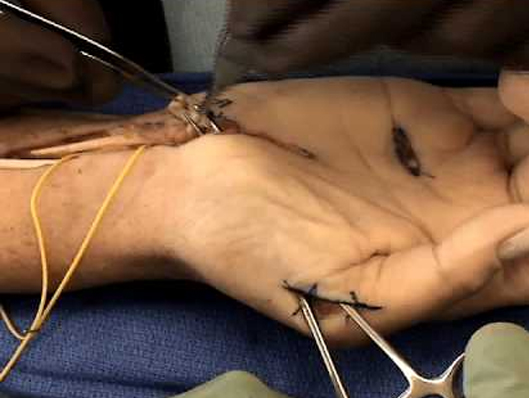Nerve repair in plastic surgery involves the surgical reconstruction or restoration of damaged or severed nerves. This specialized aspect of plastic and reconstructive surgery is crucial for addressing conditions where nerve function has been compromised, such as traumatic injuries, tumors, or congenital abnormalities. The goal of nerve repair is to restore sensation, function, and overall neurological integrity to the affected area.
Key points about nerve repair in plastic surgery include:
Indications:
- Nerve repair is indicated in cases where nerves have been damaged due to trauma, surgical procedures, tumors, or other pathological conditions.
- Common scenarios include peripheral nerve injuries, such as those affecting the hands, face, or other extremities.
Microsurgery:
- Similar to vascular repair, nerve repair often involves microsurgery. Microscopic techniques and precision instruments are used to suture nerve endings together, allowing for optimal alignment and coaptation.
Nerve Grafting:
- In cases where a nerve gap is too large for direct repair, surgeons may use nerve grafts. Nerve grafting involves taking a segment of nerve from another part of the body (autograft) or using artificial nerve conduits to bridge the gap.
Nerve Transfer:
- Nerve transfer involves redirecting a healthy, functioning nerve to the site of nerve injury. This technique is often employed when there is a nearby nerve with less critical function that can be sacrificed to restore function in the damaged area.
Functional Restoration:
- The primary goal of nerve repair is to restore sensory and/or motor function to the affected area. Sensory nerves provide feeling, while motor nerves control muscle movement.
Rehabilitation:
- Following nerve repair surgery, rehabilitation is often a critical component of the overall treatment plan. Physical and occupational therapy may be employed to promote nerve regeneration and improve functional outcomes.
Nerve Monitoring:
- During surgery, surgeons may use nerve monitoring techniques to assess nerve function and guide the repair process. Monitoring helps ensure that the repaired nerves are properly connected and functioning.
Recovery and Timeframe:
- Nerve regeneration is a slow process, and the timeline for recovery varies. It may take months to years for nerves to fully regenerate and for patients to experience maximum functional improvement.
Nerve repair in plastic surgery is a delicate and intricate procedure that requires specialized training and expertise. Plastic surgeons, particularly those with a focus on peripheral nerve surgery, may work closely with neurosurgeons and other specialists to achieve optimal outcomes.
The success of nerve repair depends on various factors, including the type and extent of the nerve injury, the age and overall health of the patient, and the timing of the intervention. Early and appropriate treatment is essential for maximizing the chances of successful nerve repair and functional recovery.
